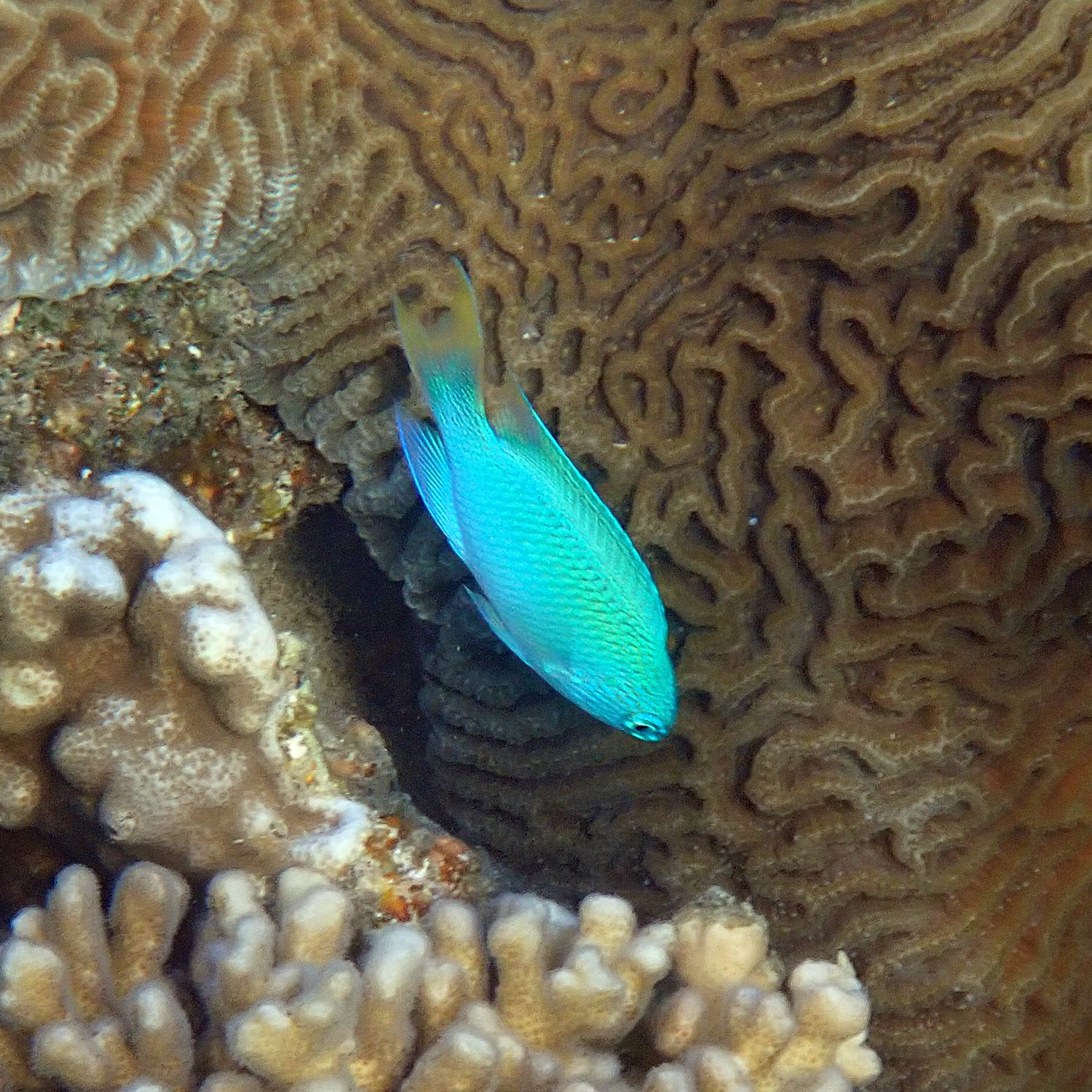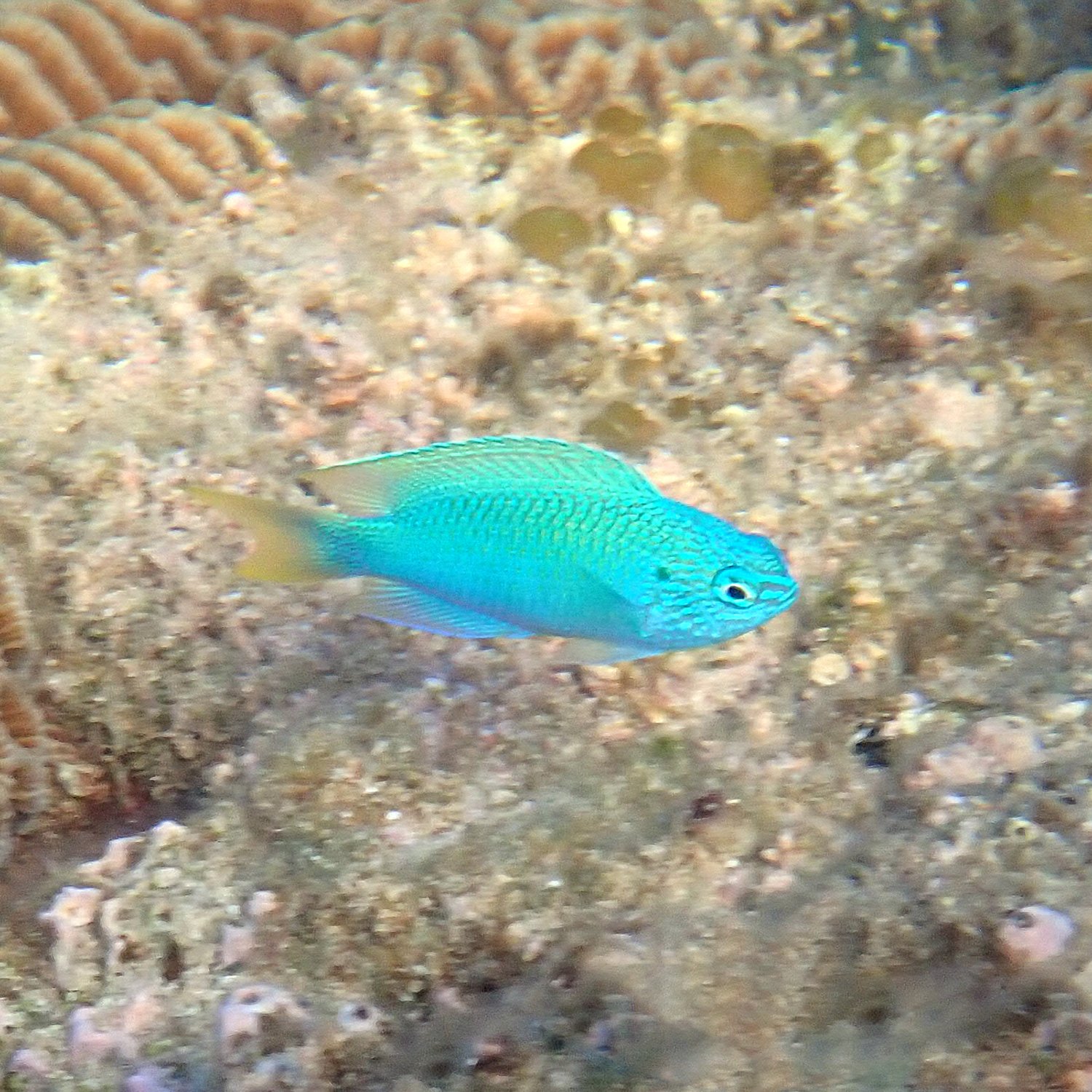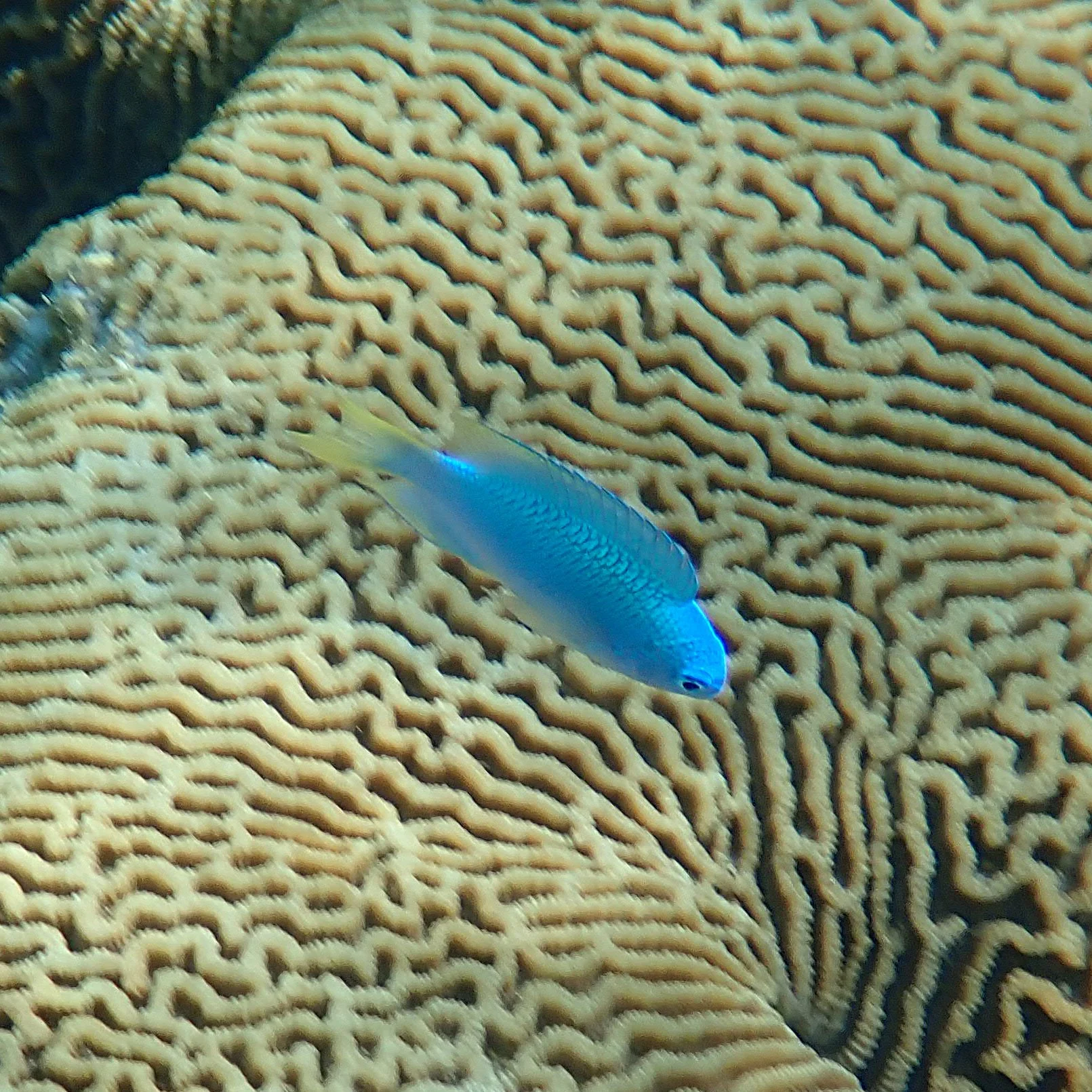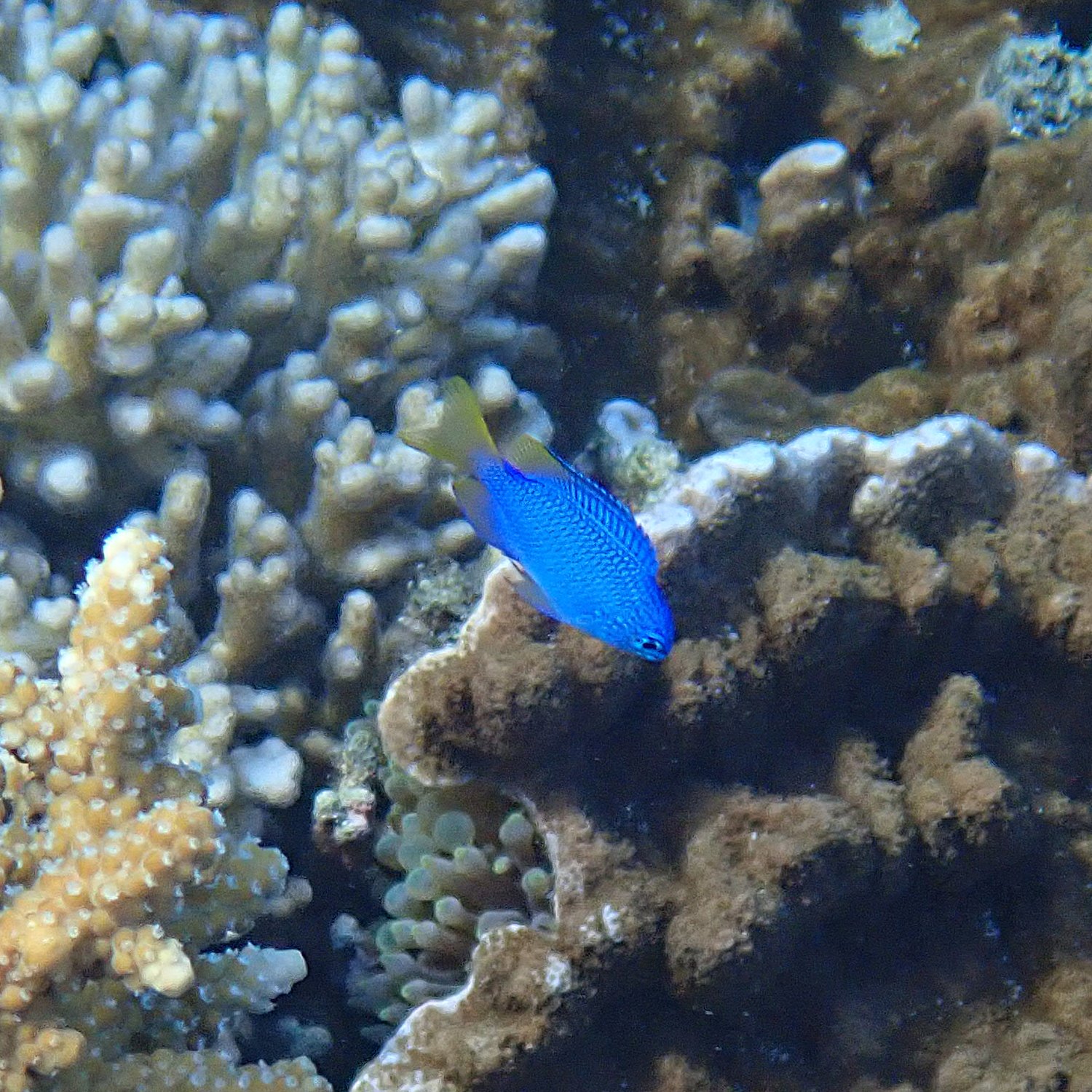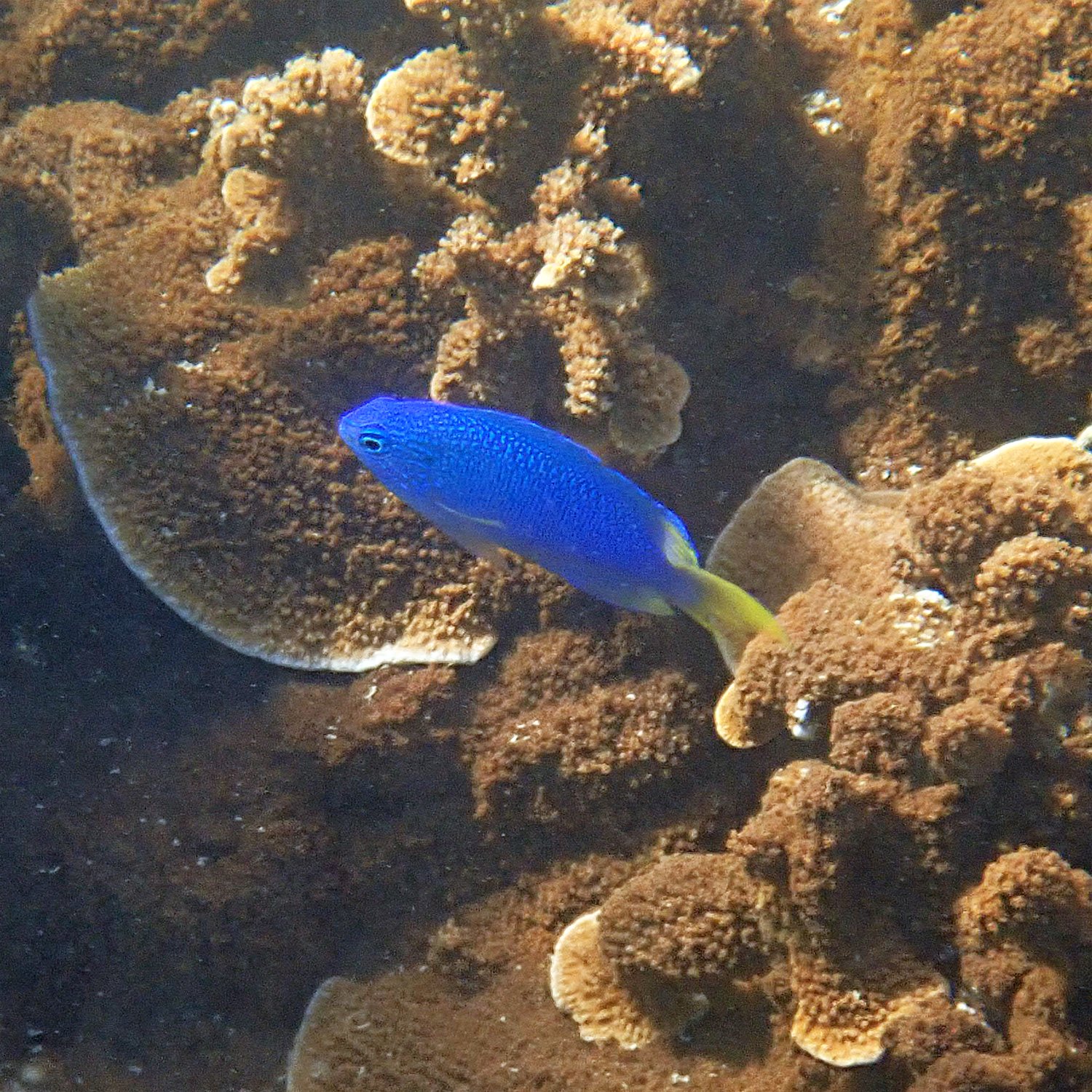Day 7 – March focus on Norfolk Island’s reef
Juvenile peacock damselfish, Pomacentrus pavo, February 2021
Today in my March focus on the coral reef of Norfolk Island I am featuring a fish called the peacock damselfish – Pomacentrus pavo. They are a delicate little fish, a gorgeous neon blue with a pale lemon-tipped tail, which only grow to 8.5 or 9 cm. It can be distinguished from similar fish (such as the neon damsel) by the tiny dark ‘ear’ spot near its gill cover.
I’m rather curious about this guy’s life cycle. Our inshore reef – from Emily Bay to Slaughter Bay – is small, so it’s relatively easy to get to know what is in there. Often you can count the fish of a particular species on one hand, and the peacock damselfish is a perfect example of this.
Because I have been only looking at three individuals, it is interesting to notice how their colours change throughout the year (see the images below). Or maybe it is a trick of the light. Certainly, they seem to lighten up from October through to February.
For ages we had just one that I would see regularly hugging a large bommie in Emily, often on the shady side. I never saw any others of his kind, until one day I saw five babies near a small inshore rock, quite some distance from the original bommie. So clearly there must have been a few others around. That was in February 2021. These babies seemed to disperse across the Emily Bay and channel area that runs between the two bays. At first, I could find four of them, then one disappeared and we were left with just three. For the next 18 months or so I would stop by and observe these three individuals, all living quite distant from each other in a solo existence on their respective coral bommies.
I usually find them midway up the side of a reef wall, although when the coral spawns they get a little more daring and will swim happily around just above the reef, presumably snacking on the coral spawn like the other damsel species.
The curious thing is, that almost overnight at the very end of December, all three of these fish disappeared. Did a message get passed across the water column for them to meet up for breeding? And if so, how? Will they come back? Will there be more babies? I always seem to have so many questions and so few answers!
This year, juvenile fish for any of the species in our bays have been hard to find and I have no idea why. Maybe they are later this year? Maybe the influx of freshwater has driven them out beyond the confines of the lagoons. Our last baby peacock damselfishes appeared in mid-February (2021), so I confess that I had expected to see some by now. I’ll keep looking!

